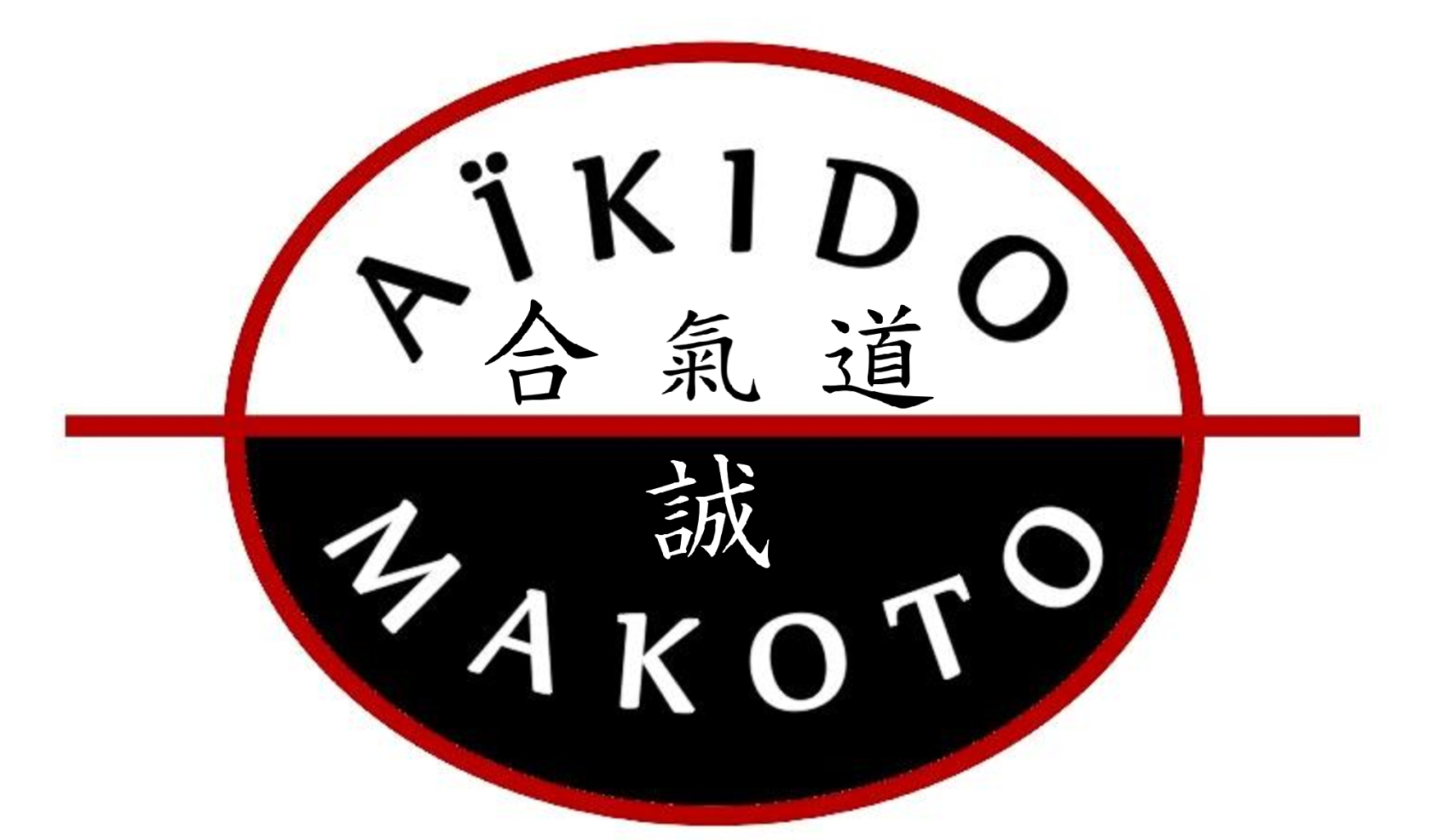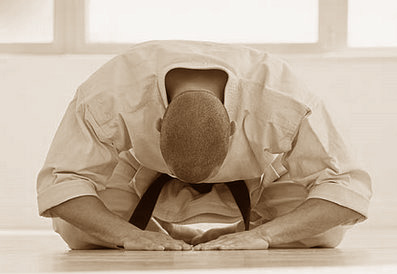Rules and etiquette for Aikido practice
The etiquette and rules that surround the practice of Aikido invite to cultivate a certain state of mind conducive to the dynamics of exchange and learning. Their application encourages, among other things, safety, hygiene, respect, but also the awareness of the moment and the environment, the mutual benevolence and the listening attitude essential to the practitioner’s progress.
Entering the dojo and leaving it, greet briefly with a bust of the bust towards kamiza (where is the portrait of the founder). This salute, standing, is called Ritsu-rei.
While climbing on the carpet, leave your shoes or sandals (zori) and tidy up by turning them outward without turning your back to kamiza. Then, while sitting on the heels (seiza), salute towards kamiza and discreetly gain your place (side shimozawall in front of kamiza) while waiting for the beginning of the course.
At the end of the course, go to greet and thank, either standing or sitting, all the working partners of the session. Leave the carpet at an angle towards kamiza.
Avoid, as far as possible considering the number of practitioners on the carpet, to train just in front of the kamiza, which is the teacher’s place, and in any case do not sit in front of him with his back to him, even the finished course, for example to bend his hakama.
In principle, a few minutes before the lesson, you have to be heated, sitting in seiza’s position, all on the same line, respecting the silence if possible. These few minutes allow the mind to empty, to get rid of the mental problems or concerns of the day and prepare for the attention required by the study.
The course begins and ends with a formal ceremony. It is essential to be on time to participate but if you arrive late, you must wait on the edge of the carpet (in principle in the center, in front of the kamiza) until the teacher signals you to join the class. Climbing on the carpet, greet kamiza in seiza, as well as the teacher, even if he does not look at you at this moment. Earn your practice spot by disrupting the course as little as possible.
The correct way to sit on the mat is the seiza’s position. But if you have a knee injury, or if this position becomes too painful, you can sit cross-legged while trying to keep your back straight. Never stretch your legs or lean against a wall or pole. You must be available at all times. If you are in seiza for lack of a partner, or for explanations, always make sure that you do not interfere with other practitioners as much as possible, and be ready to move instantly if you fall in your direction.
When the teacher shows a technique, you have to sit in seiza and watch very carefully. After the demonstration, greet the closest partner and start working.
As soon as the end of a technique is announced, immediately finish your movement, quickly greet your partner and join the other practitioners sitting in line or in a circle.
When the teacher shows you a particular movement during the class, put yourself in seiza’s position (unless this position exposes you too much) and look closely. Greet him when he’s finished. When he corrects another practitioner, you can stop working to watch, in agreement with your partner. Sit in seiza’s position and salute alike.
Ideally, the carpet should be swept every day before classes and at the end of the day. Everyone is responsible for the cleanliness of the dojo.
Talk as little as you can about the carpet: it’s dangerous for yourself and for others. Vigilance must be constant in order to avoid accidents, and the learning of art does not in any way pass by the word …
Never relax on the carpet before, during or after the lesson: it is reserved for study. In fact, as soon as one sets foot on the carpet, awareness and vigilance must be sharpened.
Never stay on the carpet without working. If necessary, stay in seiza’s position while waiting for your turn.
Do not leave the mat during practice, except in case of injury or discomfort, and in any case, notify the teacher.
If for some reason you must ask the professor a question, go to him, never call him: greet him with respect and wait for him to be available. A standing bow is enough in this case.
Every practitioner must take care to maintain his body hygiene, for himself of course, but also out of respect for others and to avoid injuries: the keiko-gi (kimono) must be clean, the nails of the feet and hands cut short, long hair tied or held. The wearing of jewelry is prohibited
Except for holidays, as a general rule, you do not eat, smoke, or chew gum in the Dojo, let alone on the carpet. However, you can rehydrate by taking a few sips of water between two courses, or even at the time indicated by the teacher. In any case, do not leave the carpet during a class to go to drink, and avoid drinking on the carpet.
In general, respect for others and work tools is essential: weapons must be stored, ready to serve, along the carpet at a location that we do not forget. Never use a garment or weapons that do not belong to you. Never step over the weapons stored along the carpet.
It is usually said “Onegai-Shimasu” (literally: I ask you, please) at the time of the greeting of the beginning of the course, and at the moment when we invite a partner, and “Arigatoo-Gozaimashita” (thank you very much) at the end of class, during the greeting to the teacher, hello we start slightly before him, and to which he answers.
Respect the most senior practitioners, and generally those who are obviously older than you. Never discuss about technique and never go into controversy on the carpet. The Dojo is a place of research and personal work, not a forum for discussion.
If you know the movement and work with someone who does not know it, you can guide it, but with the least possible language. Making the work direction feel much more profitable. If he questions more, it is up to the teacher to give him the answer. As a general rule, refrain from correcting anyone if you have not reached the level of yudan-sha(black belt).
Never block the movement of your partner, whatever his level: it is contrary to the spirit of mutual aid in research and learning, it is a source of frustration that can give rise to negative emotions, finally it can even be dangerous for you by causing reactions that you can not control. In the Founder’s Dojo, a wall warning indicated that it could be a permanent ground for exclusion from school.

